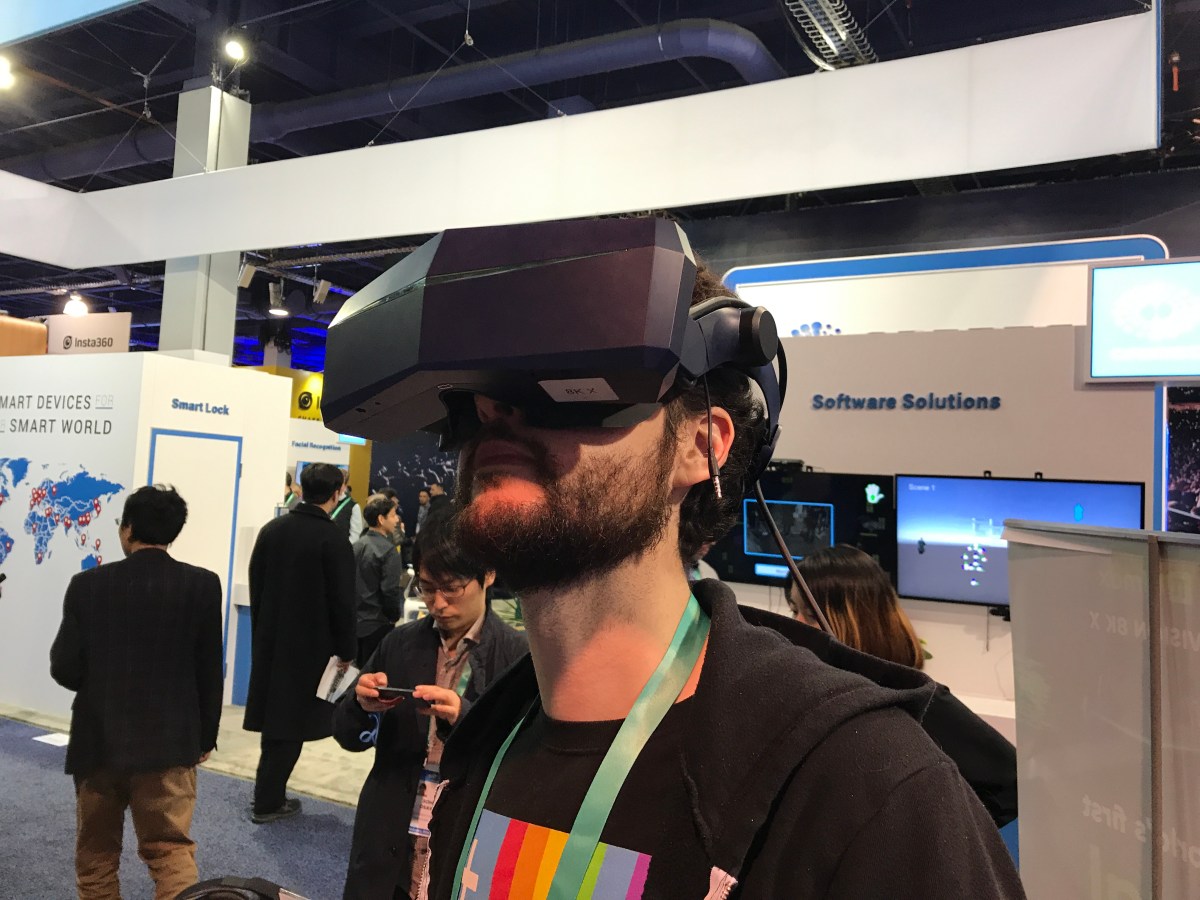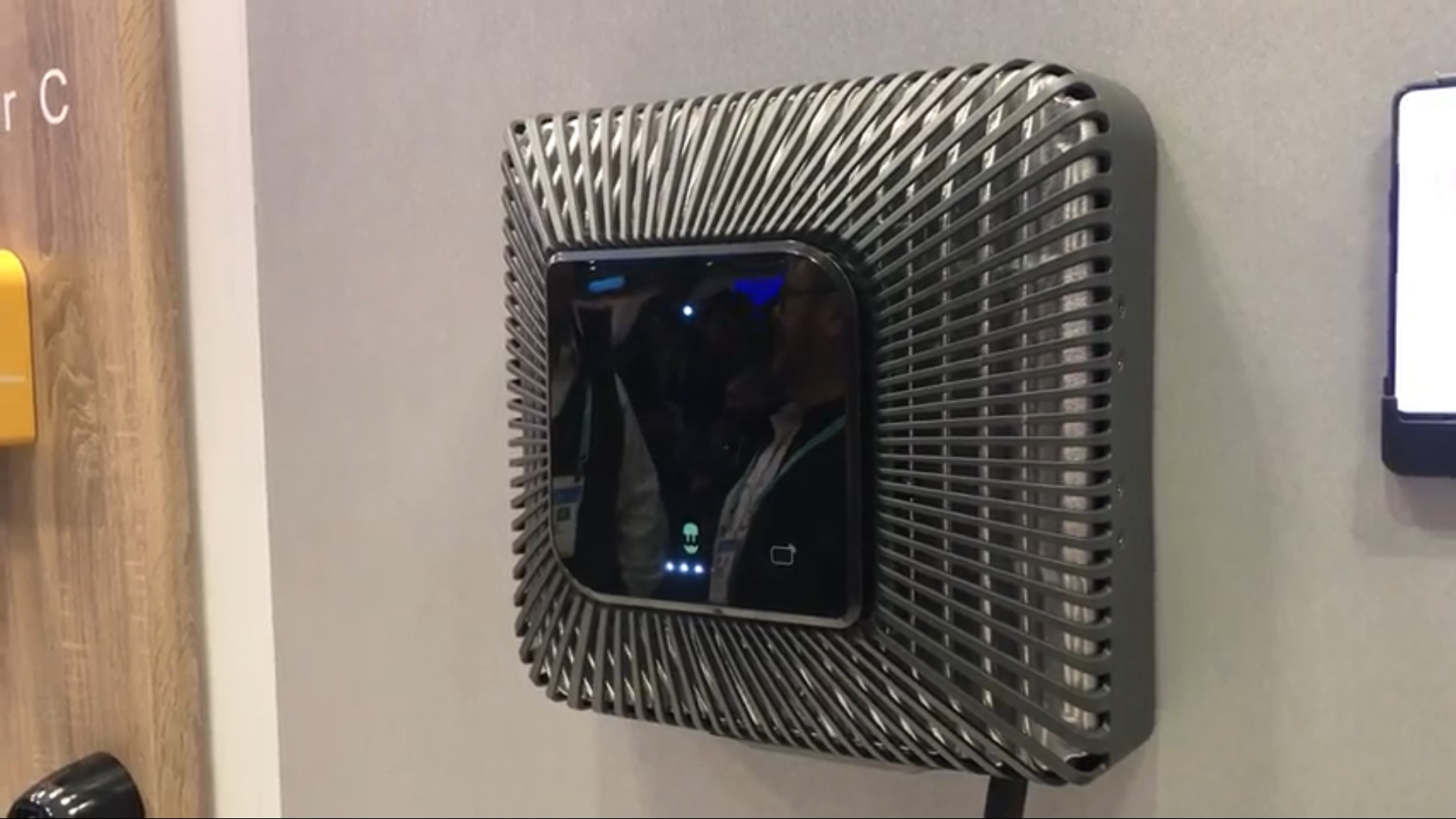CES Day 3 is over — if you’re looking for the newest announcements, we’re live blogging all the latest CES 2020 news in Thursday’s CES Day Four live blog.
- CES brings out the weird
- What’s old is new again
- Could Verizon (finally) make 5G a reality for you?
- Photoshop for your skin
- Secretary of transportation at CES: I’ve got new rules
- Exclusive: Google announces much-needed diversity and inclusion push
- A bite-sized streaming service
- Woah
- Pimax’s 8K VR headset was worth the wait
- Lighten up your closet space
- Twitter announces user controls on replies
- Hands-on with the coolest TVs of CES
- Faraday Future’s almost-autonomous shuttle
- Solid-state drives just keep getting smaller
- A fridge that will finally make you cook
- Who you gonna call?
- Jeans don’t fit? Blaming your genes? There’s an app for that
- Power for your EV and your house
- Our takeaways from Day 2
Digital Trends’ Ongoing CES Coverage
- CES Day 1 Recap
- CES Day 2 Recap
- CES Day 3 Recap ←
- CES Thursday Live Blog
- Best of CES 2020 Award Winners
- CES 2020 Schedule
- The weirdest tech we saw at CES 2020
- The best gaming laptops of CES 2020
- The best cars of CES 2020
Below is a recap of everything you missed on Wednesday, January 8, the third day of CES.
CES brings out the weird
By Brandon Widder
5:29 p.m. CES may be a hotbed for the latest gadgets and gizmos, but 8K TVs and power-guzzling VR headsets only tell part of the tale. The show floor, particularly the Sands Expo, is the wild west of tech. Here, you can find everything from automated, cheese-splicing arms to a robot that is specifically designed to bring you toilet paper in your moment of need. And that’s only the tip of the iceberg — Senior Writer Will Nicol has all the eyebrow-raising details.

What’s old is new again
By Brandon Widder
4:58 p.m. Two words: Boom shakalaka.
This enormous NBA Jam arcade machine is ???? #CES2020 pic.twitter.com/2rCBM0D5MN
— Jeremy Kaplan (@SmashDawg) January 8, 2020
Could Verizon (finally) make 5G a reality for you?
By Mathew Katz
3:28 p.m. If you want a 5G phone, your options are pretty limited right now. That might be about to change: Verizon said it expects to release 20 5G-capable devices in 2020. More importantly, those phones won’t break the bank — the provider says it expects the phones to cost between $600 and $800.
As people decide to upgrade to new phones, having an inventory of 5G-capable devices might help encourage people make the switch — though as it stands, there’s a lot of other factors at play. Verizon only provides 5G access in 30 cities, and a 5G plan costs an extra $10 a month. You’ll have to decide whether the promised blazing-fast speed is worth it.
Photoshop for your skin
By Maya Shwayder
1:57 p.m. I’m old enough to remember when people were allowed to look normal in real life, while still presenting an idealized, filtered, Photoshopped, distinctly fake version of themselves online. That era will end approximately now, or whenever this new device from P&G Ventures goes to market: The Opte Precision Skincare System (although the word “care” might be a bit of a strong choice there) will apparently let you “photoshop your skin in real life,” according to Digital Trends’ own Alina Bradford.
It’s a handheld inkjet printer called a “wand” (natch) that supposedly will fade your skin spots or hyperpigmentation and moisturize you to boot. Because God forbid anyone ever have freckles or moles. Or, you know, age.

#moisterizedandblessed
So, congrats to all the bloggers out there who will soon be expected to look just as artificially smooth-looking in person as they do in the micro-influencing Instas, and will probably be scrambling en masse to do a “collab” with P&G so they can get their hands on a free one.
Secretary of transportation at CES: I’ve got new rules
By Maya Shwayder
1:06 p.m. Secretary of Transportation Elaine Chao promised a big announcement during her appearance at CES, but our hopes for a government endorsement of flying cars was quickly dashed. Instead, Chao talked about a new set of guidelines for moving forward with research and development for automated vehicles.
The report is called AV 4.0: “Ensuring American Leadership in Automated Vehicle Technology.” Chao outlined how 38 government agencies, commissions, etc., would partner with the private sector to advance AV tech. The secretary called the report a “set of guidelines” (rather than actual rules) that the agencies want the private sector to stick to while developing self-driving cars. This includes protecting users and communities, promoting efficient markets (whereby the government would remain tech-neutral, said Chao), and “facilitating coordinated efforts.”
All of this is Government Speak for “we’re watching you but please don’t stop because our economy depends on you” and is aimed at the likes of Google and Tesla as they develop their self-driving cars.
Exclusive: Google announces much-needed diversity and inclusion push
By Maya Shwayder
12:52 p.m. Google told Digital Trends’ Jeremy Kaplan exclusively that it has spent the past few years building a 2,000-person team of “inclusion champions” to make sure that people of all stripes are involved in every product the company releases.
Google said it would reveal more details on Thursday in a blog post, but it looks like the tech giant is attempting to soften its image by partnering with local businesses, addressing unconscious biases, and diversifying its suppliers.
Not a moment too soon, seeing as the company closed out 2019 by firing four employees — three of whom are LGBT — for leading protests among Google employees about this sort of thing.
A bite-sized streaming service
By Allison Matyus
12:36 p.m. The mobile streaming service app called Quibi made some announcements at CES during its keynote presentation.
The app launches April 6 and features “quick bites” of content that are all under 10 minutes in length, so if you’re sick of binge-watching for hours on end, this new streaming service will give you a break.
Quibi will debut with 175 new original shows starring big names like Joe Jonas, Chrissy Teigen, Tyra Banks, and more. You can watch the show horizontally, which will show you a cinematic perspective, or you can flip your phone vertically to watch it from the perspective of the characters.
If you’re feeling a little overwhelmed by all the different streaming services to choose from, don’t fret, because Quibi is meant to be watched on your phone while you’re on the go, instead of on your couch the entire day (although we still love doing, too).
Woah
By Mathew Katz
11:50 a.m. Robot prosthetic arms are here.
.@SmashDawg's mind is simply blown by @BrainCo_Tech #CES2020 as he shakes the hand of a prosthetic arm that is controlled by brainwaves. pic.twitter.com/XSOe6182BC
— Digital Trends (@DigitalTrends) January 8, 2020
As you can see above, the brainwave-controlled arm acts almost exactly like a real one. The BrainCo prosthetic arm is likely to get Food and Drug Administration approval later this year and will cost around $10,000 — significantly less than a lot of competitors up to this point.
Pimax’s 8K VR headset was worth the wait
By Brandon Widder
11:23 a.m. Kickstarter backers have been waiting a looooong time for the Pimax 8K X — 14 months, to be precise. When it launched on the popular crowdfunding platform in late 2017, it boasted lofty specs and big ambitions, many of which sounded like wish-list items than something actually deliverable.

Yet, at CES 2020, Pimax delivered. The impressive headset, which now retails for a cool $1,300, features twin 4K displays and a 200-degree field of view, allowing for a better sense of peripheral vision and minimizing the claustrophobia many experience with VR. Yeah, it’s a behemoth rig and requires an insanely powerful PC to operate, but if you’re looking for the most lifelike VR experience to be had, the Pimax 8K X is your best bet.
Lighten up your closet space
By Allison Matyus
10:30 a.m. Even if your closet has a light in it, it’s still probably the darkest place in your house. A new smart light is trying to shed more light on that problem.
The Luminook showed off what it can do at CES, and while it’s really only a light strip, it actually solves a significant problem many of us have in our homes. The strip lights up as soon as you open the door and stays on until you close it.

Even if your closet does have a light, the Luminook provides shadow-free illumination, so you see all parts of your closet and not just some. It’s also decently priced, too, with pre-orders on Kickstarter available at $59.
Just think of all the missing things that you’ve been looking for that you might now finally find with this light!
Twitter announces user controls on replies
By Maya Shwayder
10:22 a.m.
Just announced at CES: Suzanne Xie, Twitter’s director of product management, said the site will begin allowing users to control who can and can’t reply to their tweets: Everyone, a group, just the people mentioned in the tweet, or no one, categorized as “Global, Group, Panel, and Statement.” It’s been described as a way to “purify” the conversation and not drown out voices in a mob.
New from Twitter: an upcoming feature will let you control who can reply to your tweet as you compose it, there will be the ability to limit replies to followers, people who are mentioned in the tweet, or no replies at all
— Karissa Bell (@karissabe) January 8, 2020
There have been some mixed reactions on this one so far: On the one hand, sure, it may make it harder to troll people or gang up on them. On the other, as reporter Karissa Bell pointed out, it could lead to more siloing as politicians or brands decide to limit who can reply to them.
During the talk at CES, Twitter’s head of product, Kayvon Beykpour, said that the company wants to build more privacy and trust into its products, according to reporter Queenie Wong.
Twitter’s head of product @kayvz says the company is focused on three priorities: 1)health, 2) conversations and 3) interests. #CES2020 pic.twitter.com/2PWLGt60OU
— Queenie Wong (@QWongSJ) January 8, 2020
“You have to be honest and transparent with users when you miss something,” said Beykpour. “It’s part of building confidence.”
No word yet on the mythical Twitter “edit” button.
Hands-on with the coolest TVs of CES
By Mathew Katz
10:14 a.m. Caleb Denison knows more about televisions than I do about obscure Star Wars novels (and I had a Star Wars-themed bar mitzvah). He’s spent the past few days playing with OLEDs, wallpaper televisions, TVs that roll up and down – he’s seen them all. In case you missed it, here are his takeaways from the big three manufacturers: LG, Samsung, and Sony.
Faraday Future’s almost-autonomous shuttle
By Mathew Katz
9:20 a.m. We’ve been told again and again that autonomous cars are the future. Appropriately named Faraday Future is hoping to show the power of its kind-of-autonomous fleet of electric vehicles with a new shuttle between Los Angeles and Las Vegas. CEO Carsten Breitfeld told our cars writer Ronan Glon that his company plans to provide a “first-class experience” that’s better than your typical business class flight, for the same price.
Faraday Future’s new car, the FF91, will debut with level 3 autonomous technology, which means it will still need a shuttle driver to keep an eye on things. But the car has a huge rear-seat area with an entertainment system and a relaxing “spa mode” to give you a better opportunity to sleep than your typical short-haul flight. Here’s our editor-in-chief Jeremy Kaplan trying it out.
The end goal would be to reach level 5 automation, meaning no driver is needed and you can have the whole car to yourself on your way between L.A. and Vegas.
Solid-state drives just keep getting smaller
By Brandon Widder
9:08 a.m. Fifteen years ago, your typical, 500MB SSD was roughly the size of a lunchbox (and cost 40x as much). Samsung’s latest external hard drive is a far cry from the SSDs of yesteryear, however. Announced at CES 2020, the T7 Touch Portable SSD is smaller than a business card and comes in one of three sizes (500GB, 1TB, and 2TB). It also features a built-in fingerprint sensor — a first for Samsung — speeds up to 1,050 MB/S, and an activity light designed to alert you when the device is in use.

There’s no word on pricing or availability, but given its predecessor, the T5, was priced around $200, we expect the T7 to be in the same ballpark.
A fridge that will finally make you cook
By Allison Matyus
8:47 a.m. If you’re the type of person who stares blankly at the contents of your fridge trying to figure out what you can make with what you already have, a new Samsung fridge is here to save you.
Samsung debuted its Family Hub refrigerator at CES 2020 to help people actually use the food in their fridge instead of letting it go to waste. The refrigerator uses Samsung’s Whisk smart food platform and A.I. image recognition from a camera located in the fridge to scan what kind of food you have and what kind of recipes you can make with it.

The technology even tracks expiration dates, so you don’t have to worry about wondering if the mayo is bad. And for those with specific diet preferences like gluten-free or vegetarian, you can customize the platform to incorporate them.
Now you have no excuse to order take out because “there’s nothing in the fridge to make.”
Who you gonna call?
By Mathew Katz
8:35 a.m. Sony, apparently.
Well, there wasn't much to see at Sony's booth for audio this year, but they did have the Ghostbusters car #CES2020 pic.twitter.com/x9li20xZE1
— Ryan Waniata (@ryanwaniata) January 8, 2020
Jeans don’t fit? Blaming your genes? There’s an app for that
By Maya Shwayder
7:24 a.m. Our own Andy Boxall has the lowdown from Day 2 on a startup called DnaNudge that will take a sample of your DNA (advertisers, rejoice) and analyze it to determine what foods are best specifically for you. You then can download an app to your phone or get your code loaded into a wristband, and start scanning the bar codes of food items at supermarkets t0 get a literal thumbs-up or thumbs-down from the app as to whether you should eat this food based on your body chemistry. Interestingly, the company does not bill itself as a weight-loss app, but says it’s focused on health care and prevention.

Isn’t living in the future cool? Isn’t the thought of random private companies holding on to all your genetic secrets kind of creepy and invasive? Am I seriously considering doing this because eating healthy is nigh-impossible in 21st century America because all of our food is made out of hydrogenated corn syrup and sugar?
To all of these questions and more I say: No! Maybe … yes.
Power for your EV and your house
By Allison Matyus
6:41 a.m. An EV charger that debuted at CES not only charges cars, but it can help yur car power your house as a backup.
The Wallbox Quasar can provide the equivalent of about two days’ power to your house using the EV sitting in your garage or driveway. Right now, it only works with the Nissan Leaf, the Nissan NV200, and the Mitsubishi Outlander, but there’s a possibility it could support Tesla models in 2021.

Not only does it charge your home, but it also looks nice in your home, too. It kind of resembles the smart thermostats on the market.
It’ll cost you though: The Wallbox Quasar will set you back $4,000, which if my math serves me correctly, is a LOT of electric bills.
Our takeaways from Day 2
By Mathew Katz
My favorite read from yesterday comes from Senior Editor Matthew Smith, who has been on something of a tear against high-tech PC monitors. After trying out a few gamer-friendly televisions on the CES show floor, he writes that TVs like LG’s CX-series OLEDs might be a better pick for people who want a top-tier gaming experience. Get ready to see more gamer-friendly features on your televisions in the coming years, he says.
Speaking of gaming, there’s no shortage of weird and wonderful gaming tech as CES this year. One of the most interesting is the Razer Kishi, which essentially turns your phone into a Nintendo Switch.
Senior Writer Jenny McGrath got her hands on the OxiCool, a zero-emission air conditioner that can chill your entire house using water. It uses about 10% of the electricity of a traditional air conditioner and, unlike many things at CES, you can actually pre-order it starting on January 10.
Oh, and yesterday, Ivanka Trump spoke at CES. She didn’t really say anything.
For a complete roundup of the past few days at CES, check out yesterday’s Day 2 Live Blog and Monday’s Day 1 Live Blog.
Editors' Recommendations
- How to watch Asus’ The Incredible Unfolds event at CES 2022 if you missed it
- Dell Prime Day Sale 2020: 7 deals you can’t afford to miss
- 2020 Republican National Convention Day 3: How to watch Mike Pence
- The best booths at CES 2020
- Where were all the cameras at CES? 2020 will see fewer, but better, releases



